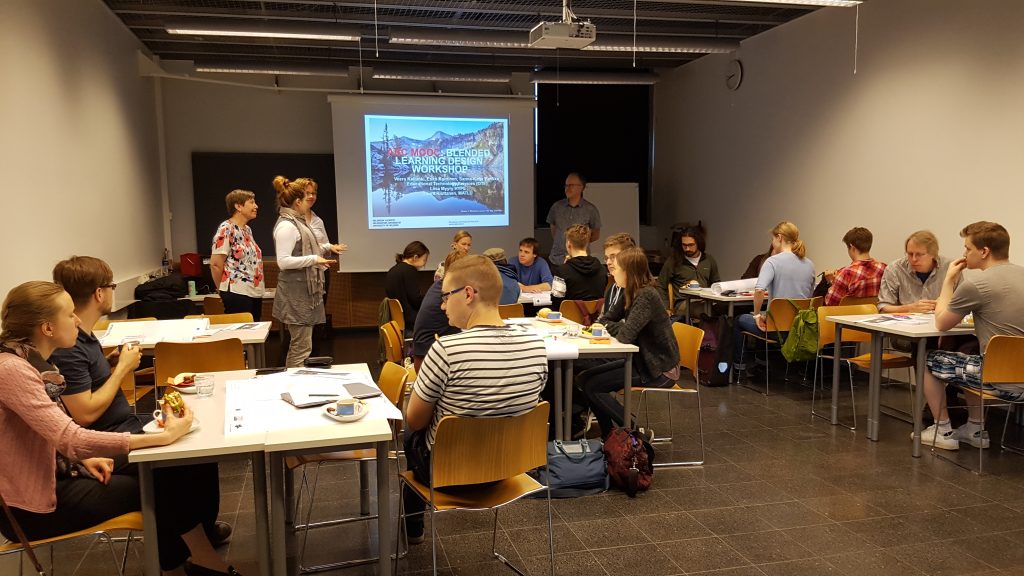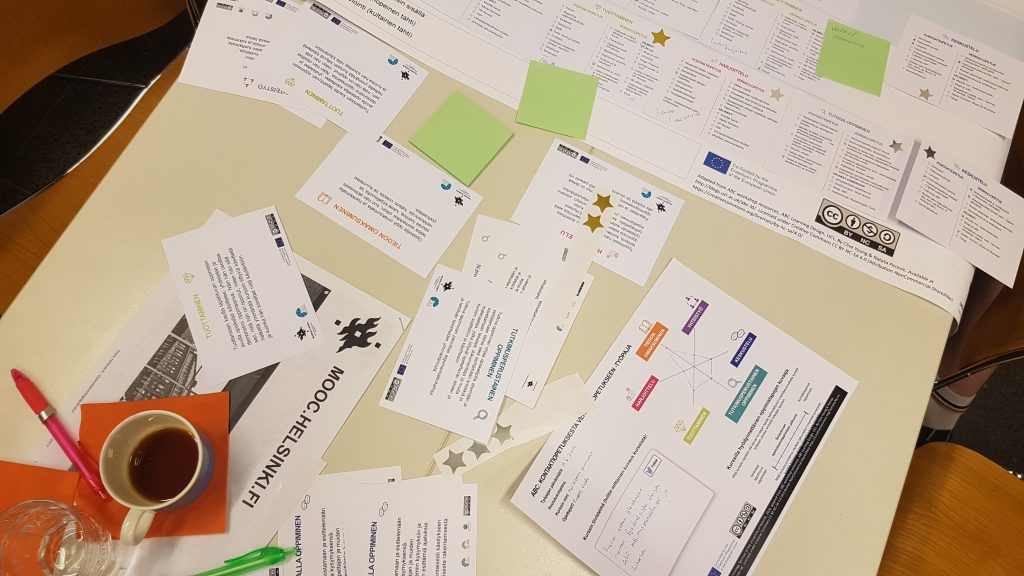The Digital Leap project of the Master’s Programme in Atmospheric Sciences (ATM-MP) has been brewing all summer and the summer workers are finally reaching the end of this special summer and same way the “deadline” of all the digital courses is getting closer. Everyone has done their work by distance, mainly at home. Is the work finished? Is Digital Leap now ready to use? How the summer went overall and did the summer workers learn something?
Janina:
“Hello! The summer is nearly over, and I got to say that this has been a great experience. The work I needed to finish had surprisingly various tasks and I learned some new, unexpected skills such drawing with computer, designing and creating these everyday homework tasks for future students and a lot of physical vocabulary, as one of my job turned out to be translating the learning materials of other bachelor courses. I enjoyed having different kind of work assignments and I believe that they will all be finished before the August is over. The last tiny thing is to translate the multiple-choice questionnaires which I made myself on the course base. There is only fifty of them, not a big deal!
I was a little afraid that the distance to all the other workers would bother me. I was not sure if I really could get myself working while staying at home. Luckily the work was meaningful and interesting, and I had some distance help from both, my co-worker and supervisor. Thank you, Laura and Mila, you really made my summer!
Mila:
”Hello! This summer went by in the blink of an eye, and now it’s already time to look back.
Remote work was a new experience for many of us, including me, but I was surprised to see how smoothly everything was organized. I got used to online meetings and email communication, among other things. Considering the constantly changing working life, this was a very valuable experience, even though I would be lying if I said I didn’t miss meeting my co-workers in person. However, as I was working on the Digital leap project, this kind of remote work provided me some new ideas about what it means to work individually, be it as a co-creator of a course or as a student.
I had a chance to do a whole range of things during summer: translating course material, looking for pictures, checking their copyrights and transferring material to the MOOC platform, to mention a few. To my surprise, one of the most demanding things was finding appropriate figures and acquiring the copyrights to use them. In an ideal world, all the websites would state clearly what kind of policy they have with using their figures and where to contact if needed, but unfortunately this is not the reality. In any case, I am grateful to all the people who were kind and cooperating when contacted. Thanks to their help we were able to build a nice-looking course material with illustrative figures.
Another thing I noticed is the importance of the correct vocabulary. Just translating word for word from one language to another is not enough; it is necessary to take account of the context. In this case, it was particularly important to pay attention to the scientific terms used in the course material. Therefore, I think it’s important to have a person familiar with the field of study working on the translations together with the professionals of the language. In addition, it’s essential to remember that making course material for independent studying is different from making lecture slides. The content must be created so that it is understandable even if there is no lecturer explaining things at the same time. Therefore, bulleted lists with keywords alone are not enough. As I worked on the material, I tried to edit the text in a way that hopefully helps the future students get the hang of the subject. What’s more, I learnt a lot myself on the way!
In this way, my part in the Digital leap project is coming to its end. However, the real results of the hard work done by the whole Digital leap team will come out only after the students and teachers start working using the platform, since this is the only way to get to know what works and what does not. I wish I had more time to refine the course material I have been working on, but I know I will leave the course material in good hands. Lastly, I would like to sincerely thank all the people I had the chance to work with. It was an honour to be able to work with you all and I have learned a lot from you all. Without your help I wouldn’t have been able to do so much for the courses. Special thanks to Janina and Laura who were there for me every time I needed. My summer was not only educational, but it was also fun and memorable thanks to you!”
Mikael:
”Hi! My name is Mikael. I started working at INAR a year ago when it was time to complete me civil service. I was “hired” to create video content for these Digital Leap courses as well as for the Climate University courses.
My first assignment when I started last fall was to make video lectures for Basics of Oceanograpy course with Professor Petteri Uotila. We filmed the videos in the UniTube studio in Kumpula. We filmed once a week for maybe eight weeks, and I edited the videos during that same time. Around the end of the year, the videos were done.
However, at this point we realised that we didn’t have enough material, such as figures or photos, in the videos, only the talking head of Petteri. For the material that we did have, we didn’t have the copyrights. Thus, we decided to take a break from this course and focus on other stuff.
I started to work on Air Quality in a Changing World (AQCW). I had learned from the mistakes we made with the oceanography course and that made the process for this next course much clearer. We didn’t want that the student would be forced to stare at the talking head of the lecturer, so we decided to make the core of the videos a PowerPoint slideshow. Not maybe the most unique idea, but it works well. The course ran for the first time last spring and now that we have all the copyright issues sorted out, we are going to finalise the videos and text material this fall.
We are also going to get back to the Basics of Oceanography. I also learned a few new things while working on the videos for AQCW so I’m sure that the videos will become much better this time compared to last year. Mila and Fabio have done an amazing work at finding new figures for the videos. Now it’s time for me to start editing them into the videos. The course starts in two weeks so there’s a bit of hurry, but I’m sure we’ll handle it. 🙂
I worked as a civil servant at INAR for nine months. Apparently, I did something correct, because I was hired for an extra half a year as a trainee. I started my actual work in the beginning of August after a summer break and I will be working here until the end of February 2021. After that life for me is a mystery, but right now I’m quite happy where I am. 🙂
A few tips for making videos for online courses:
- The shorter the videos are the better. You could e.g. divide a 15-minute-long video into three 5-minute-long videos. This way they aren’t so exhausting for the students.
- Reserve time for going through the figures and their copyrights. It can be a real pain in the as* trying to find each of the figures and asking different people if it is ok to use them. This is extremely important if the course is going to be open for anyone who has access to internet.
- If you use PowerPoint in the videos, make a template file, which has not footer and make a safe margin to the bottom of each slide. There should be nothing there so that your subtitles aren’t covering anything up.
- Use a black background in your PowerPoint. It’s much easier for the viewers eyes.”

